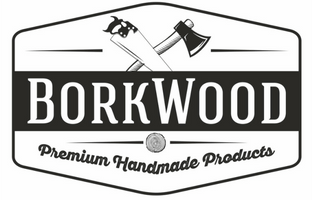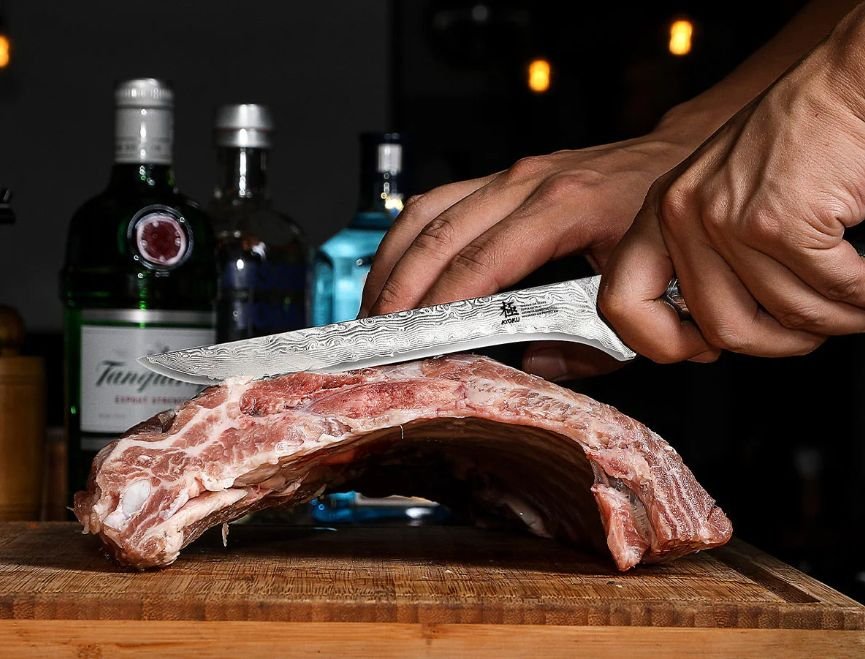How to Choose the Best Boning Knife for Your Needs?
A boning knife is an essential tool for precise meat preparation, offering unmatched control when removing bones, trimming fat, or making delicate cuts. With various options available, selecting the right boning knife can feel overwhelming. This guide will help you understand the key factors to consider and find the perfect boning knife for your kitchen needs.
Understanding the Role of a Boning Knife
What Is a Boning Knife?
A boning knife is designed for precision. Its narrow blade, sharp tip, and curved or straight edge make it ideal for tasks like deboning, filleting, and trimming meat. Unlike general-purpose knives, boning knives are crafted to minimize waste and ensure clean cuts, preserving the integrity of your ingredients.
Why It’s Special
Boning knives excel in tasks that require precision and flexibility. They are particularly valuable for handling meat and fish, providing control that a standard chef’s knife cannot match.
Key Factors to Consider
Blade Material
When choosing a boning knife, start with the blade material:
Stainless Steel: Offers rust resistance and ease of maintenance, making it a popular choice for home cooks.
High-Carbon Steel: Known for its exceptional sharpness and durability, though it requires regular care to prevent rust.
Blade Flexibility
The flexibility of a boning knife determines its suitability for different tasks:
Flexible Blades: Ideal for delicate cuts like fish or poultry.
Stiff Blades: Perfect for tougher cuts such as pork or beef, where more strength is needed.
Blade Shape and Length
Curved Blades: Provide greater control when maneuvering around bones.
Straight Blades: Suitable for slicing and general meat preparation.
Boning knives typically range from 5 to 7 inches in length. Choose shorter blades for precision tasks and longer ones for larger cuts.
Handle Design
Comfort is crucial when handling a boning knife. Look for:
Ergonomic Handles: These reduce fatigue during prolonged use.
Material Options: Handles made from wood, plastic, or composite each offer unique advantages, such as durability or grip.
Weight and Balance
A well-balanced knife provides better control and ease of use. Ensure the knife feels comfortable and stable in your hand.
Maintenance Requirements
Consider knives that are easy to clean and sharpen. Some, like those with nonstick coatings, are easier to maintain and last longer with proper care.
Matching the Knife to Your Needs
For Home Cooks
Home cooks benefit from versatile and affordable options. Look for knives that combine durability with ease of use. For example, the Kyoku Daimyo Series boning knife, crafted from Japanese VG10 steel, offers a sharp edge and ergonomic handle, making it a great choice for home kitchens.
For Professional Chefs
Professionals often prefer premium knives for their performance and durability. A knife with high-carbon steel, like those found in Kyoku’s professional lineup, can handle rigorous use while delivering precise results.
For Specific Tasks
Boning Fish: Choose a flexible, curved blade for finesse.
Trimming Meat: A stiff, straight blade works best for tougher cuts.
Breaking Down Poultry: Opt for a medium-length blade with slight flexibility.
Recommendations and Tips
Trusted Brands and Models
When shopping, consider reputable brands known for quality. Kyoku, for instance, offers well-crafted boning knives that blend performance with affordability, making them suitable for both casual cooks and professionals.
Budget Considerations
Entry-Level Options:
Look for stainless steel models that balance price and performance.
Mid-Tier Choices:
Boning knives like Kyoku’s Daimyo Series deliver premium features at a reasonable price.
High-End Knives:
Consider high-carbon steel options for maximum sharpness and durability.
Conclusion
Selecting the right boning knife involves considering blade material, flexibility, handle design, and your specific needs. Whether you’re a home cook seeking an affordable tool or a professional chef demanding precision, the right boning knife can elevate your culinary skills. Take the time to find a knife that feels comfortable and fits your style—your cooking will thank you for it!







